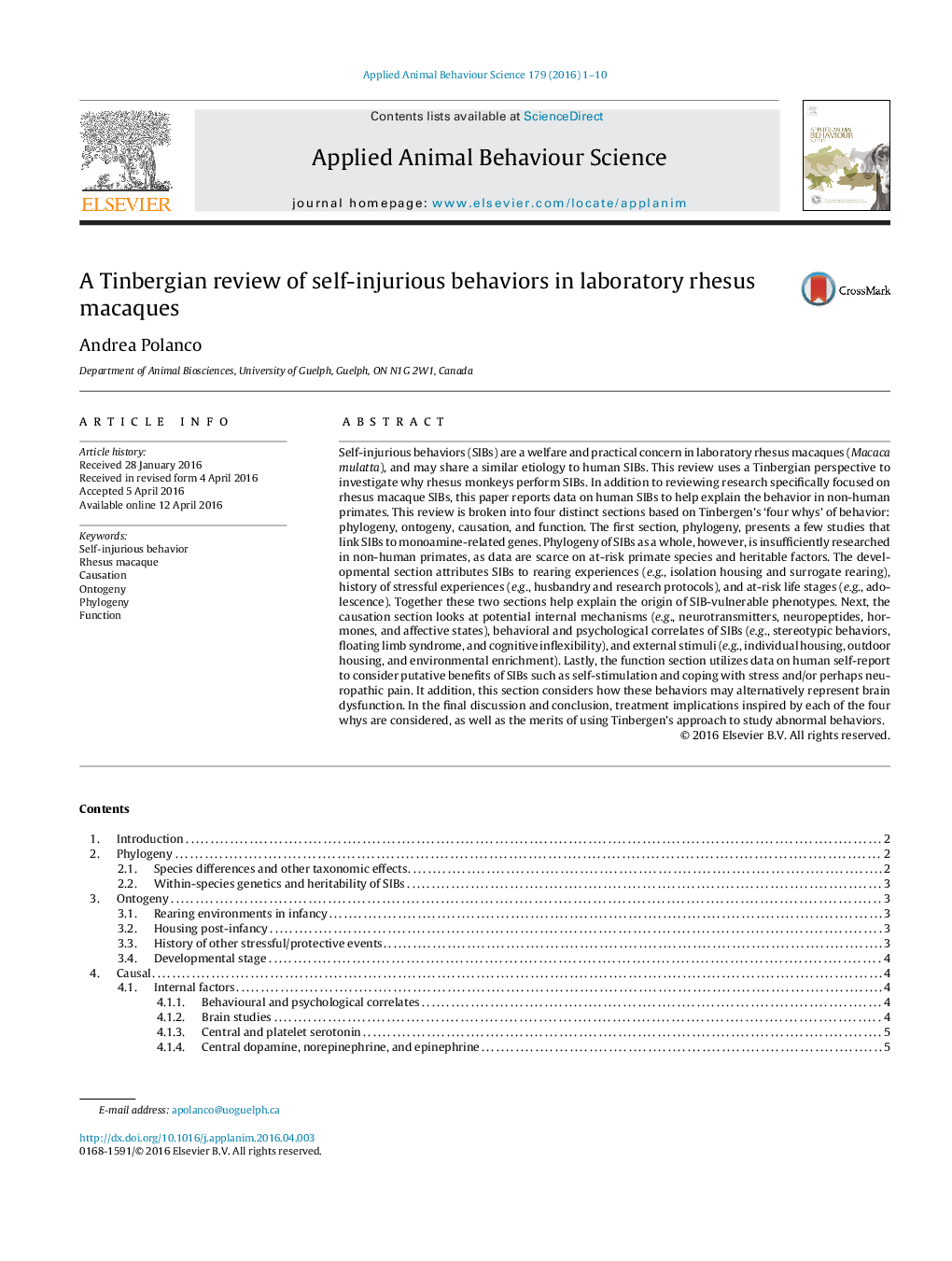| کد مقاله | کد نشریه | سال انتشار | مقاله انگلیسی | نسخه تمام متن |
|---|---|---|---|---|
| 4522365 | 1625327 | 2016 | 10 صفحه PDF | دانلود رایگان |
• The phylogeny of SIBs is poorly understood.
• Ontogenetic explanations of SIBs demonstrate the importance of social rearing.
• Causal studies predominate the literature, but more neurological work is needed.
• The function of SIBs in non-human primates is the most difficult to assess.
• Overall, Tinbergen’s framework proves to be useful in studying abnormal behaviors.
Self-injurious behaviors (SIBs) are a welfare and practical concern in laboratory rhesus macaques (Macaca mulatta), and may share a similar etiology to human SIBs. This review uses a Tinbergian perspective to investigate why rhesus monkeys perform SIBs. In addition to reviewing research specifically focused on rhesus macaque SIBs, this paper reports data on human SIBs to help explain the behavior in non-human primates. This review is broken into four distinct sections based on Tinbergen’s ‘four whys’ of behavior: phylogeny, ontogeny, causation, and function. The first section, phylogeny, presents a few studies that link SIBs to monoamine-related genes. Phylogeny of SIBs as a whole, however, is insufficiently researched in non-human primates, as data are scarce on at-risk primate species and heritable factors. The developmental section attributes SIBs to rearing experiences (e.g., isolation housing and surrogate rearing), history of stressful experiences (e.g., husbandry and research protocols), and at-risk life stages (e.g., adolescence). Together these two sections help explain the origin of SIB-vulnerable phenotypes. Next, the causation section looks at potential internal mechanisms (e.g., neurotransmitters, neuropeptides, hormones, and affective states), behavioral and psychological correlates of SIBs (e.g., stereotypic behaviors, floating limb syndrome, and cognitive inflexibility), and external stimuli (e.g., individual housing, outdoor housing, and environmental enrichment). Lastly, the function section utilizes data on human self-report to consider putative benefits of SIBs such as self-stimulation and coping with stress and/or perhaps neuropathic pain. It addition, this section considers how these behaviors may alternatively represent brain dysfunction. In the final discussion and conclusion, treatment implications inspired by each of the four whys are considered, as well as the merits of using Tinbergen’s approach to study abnormal behaviors.
Journal: Applied Animal Behaviour Science - Volume 179, June 2016, Pages 1–10
